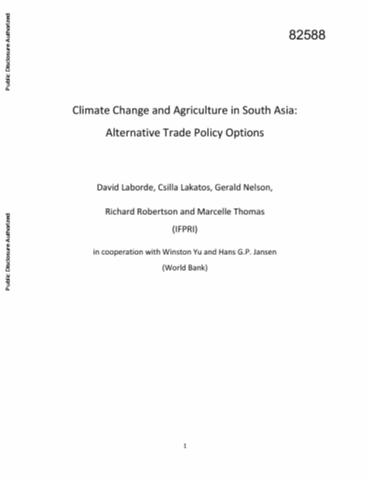Resource information
There is increasing evidence suggesting that climate change will negatively impact agricultural production in South Asia. Decreased domestic production may make South Asian countries more dependent on imports. The extent to which South Asia will need to increase its imports as a result of climate change will presumably depend on the degree to which the latter will affect domestic output. The effects of climate change on agriculture may well differ substantially for individual South Asian countries and indeed for regions within a given country which can be approximated by food production units. This calls for an analysis of climate change effects on trade flows under alternative trade policy regimes both for agriculture and non-agricultural sectors. The specific objectives of the paper include the following: analyze the extent to which agricultural production in South Asia and elsewhere in the world may be affected by different scenarios regarding climate change; analyze the extent to which changes in domestic production in South Asia resulting from climate change will lead to increased demand for imports by South Asian countries; analyze the effects of increased import demand in South Asia and changing exportable surpluses elsewhere on world market prices of major agricultural commodities consumed in South Asia; to the extent that South Asian governments allow transmission of changes in world market prices to domestic prices, analyze the potential welfare effects of changes in the latter; analyze if, and to what extent, worldwide trade liberalization and implementation of South Asian Free Trade Area (SAFTA) will dampen the effects of climate change on domestic agricultural prices in South Asia. In this context, the report is organized as follows: chapter one gives introduction. Chapter two describes the methodology used - with particular attention to how different models and modeling techniques are linked to produce an as accurate as possible assessment based on state-of-the-art knowledge. Chapter three provides an up-to-date analysis of trade flows and policies, and production patterns for key food products in South Asia to explain the context in which climate change is taking place. Chapter four describes the climate change scenarios and illustrates their consequences for crop yields at a global level and for South Asia - and in particular shows the vulnerability of the region to these changes. Baseline design, simulations, and results are discussed in chapter five. The final chapter six provides a short summary, discusses the limitations of the analysis, and derives suggestions and guidelines for future research.


